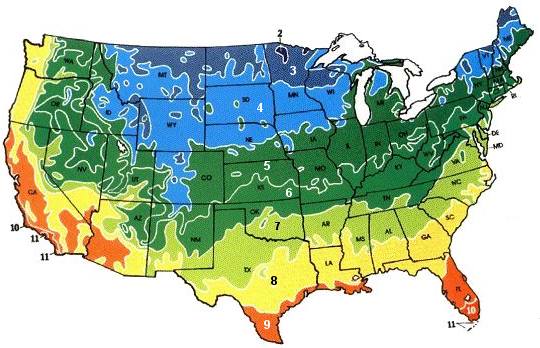

Using Willow Water for Rooting your Cuttings - Want to learn more? Click Here: Willow Water for Rooting Cuttings

My Sponsors:

Visit The Madd Hatter's House of Humor

Most gardeners are familiar with the U.S. Department of Agriculture's Plant Hardiness Zone Map.
First published in 1960 and updated in 1990, this map is based on average annual minimum temperatures
recorded throughout North America. By using the map to find the zone in which they live, gardeners are
able to determine what plants will "winter over" in their garden because they can withstand these
average minimum temperatures.
Although these zones are useful as an indicator of a plant's likelihood for survival in a given area,
many factors, including soil type and fertility, soil moisture and drainage, humidity, and exposure to
sun and wind determine a plant's growth and success or failure in its enviroment. Today, nearly all
American reference books, nursery catalogs, and gardening magazines describe plants using USDA hardiness zones.